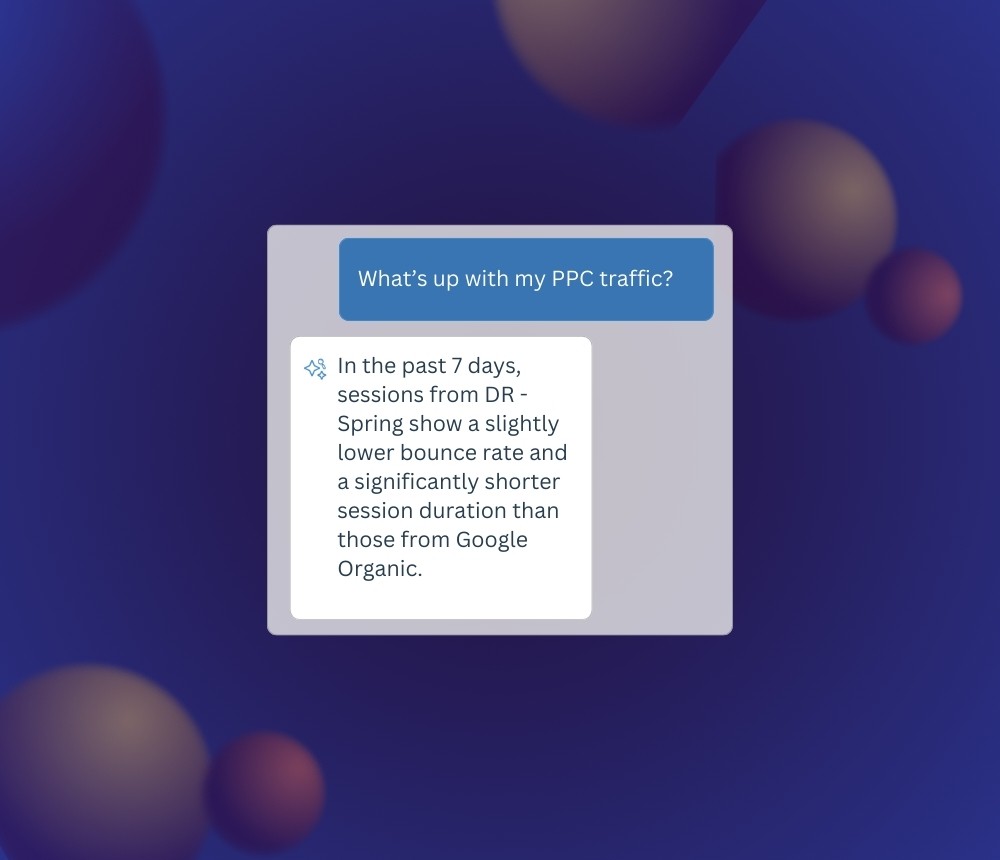The complete website launch checklist

Before your website goes public, you need to check and recheck the most minute details. Websites are complex, but it's mostly the basic mistakes that end up costing you. Your final website itself should run without any glitches, and you need to test it thoroughly before launch.
Your own web designer and developers need to make sure their code is testable too, so you may use a special staging site platform to find bugs. However, web design is a multifaceted process that isn't just limited to code.
Follow the nine points on our launching a website checklist below to make sure your launch is a success and every part of it functions smoothly.
1. Proofread content
Nothing will turn off a visitor to your site more than a glaring typographic error in a blog post or on a product page listing.
It's one of those mistakes that can easily slip through. There's no limit to the number of times your content should be proofread. Make sure it makes sense and has no grammatical errors or embarrassing typos.
You should have your content read by someone from your target audience to ensure it's engaging and supports your brand strategy. It should help your website traffic and visitors move down the conversion funnel smoothly.
As part of your ultimate website launch checklist, make sure to check and recheck every detail for a successful site launch too! Take the time to proofread content thoroughly - have it read by someone from your target audience so that it is engaging and supports brand strategy. Additionally, optimize font size with short sentences and bullet points for easier reading.
2. Test your links
The user experience is all about clicking on links and reaching your expected destination. Website visitors will get frustrated with a broken link or something that takes them to an unexpected destination. Broken links are just bad new all around.
Ensure all the following links on your new website work. Test them repeatedly to check this.
Internal links: These are links that connect your web pages with each other i.e links that point to other pages on the same website.
External links: These links take you to another website.
Outgoing links: These are backlinks from other websites, that take someone to your website. You have to check if clicking on these (on another website) leads you to the right web page or not.
Email links: Such links are used to send emails to the admin or other users of the website.
For more technical tests, check out these free website launch test plans
3. Ensure mobile compatibility
Smartphones and tablets have the lion's share of web browsing traffic. For the first time in history, desktop users are fewer in number than mobile web users. In 2020, 68.1% of all website visits around the world came from mobile devices.
If your new website is not compatible with mobile use, expect half of your users to leave your website as soon as they land on it. So, make sure your website is mobile-friendly and that you've used a mobile responsive design.
The buttons need to be large enough to tap with your finger, and filling in a form shouldn't be a struggle. Users shouldn't have to zoom in to read content on web pages or see a product image. You need to have a mobile-friendly website if you want the existing site to rank better on Google too.
Ensure your web development process documentation includes a mandatory mobile website section. Web development process documentation is essential for a successful website launch. It ensures that all the necessary steps have been taken to ensure a site functions properly and meets user expectations.
Documentation helps developers stay organized, prevent errors, and track progress. Furthermore, it can provide guidance on design principles, coding standards, and best practices for creating quality websites. Documentation also serves as an educational resource for new hires or those unfamiliar with web development processes.
By documenting the entire development process from start to finish, teams can identify areas of improvement and make sure they are following industry-standard procedures for building reliable websites.
4. Work to please the search engines
SEO drives organic traffic to your website. As a site owner, it should be your priority.
If your website is optimized for SEO, you need to check your tactics are working. You probably have a set of research-based keywords, so check the following:
Are your keywords included in the URL for each page, the title tag, page headings, and for image alt text?
Do you have a meta description that includes the keyword?
There are no incorrect spellings.
There isn't any keyword stuffing.
You've used Google Analytics because metrics can help.
When optimizing a website for SEO, the approach will vary depending on whether it is an established or brand-new site. Regardless of how long your site's been around, SEO will always be part of a comprehensive website launch checklist.
For a brand-new site, it's important to build an SEO strategy and keyword research from scratch in order to identify the most effective keywords and content that will help improve rankings in search engines.
Here are six ways to approach your new website SEO strategy:
1. Develop buyer personas and understand their search intent: Understanding who your target visitors are, will help you to determine what type of keywords they may be searching for in order to reach your site pages or website.
2. Analyze the competition: Using Google Analytics or Google Search Console to research existing websites that offer similar products or services can reveal keyword opportunities as well as insights into how competitors have framed content around those terms.
3. Choose relevant, descriptive keywords: Use specific words and phrases that accurately reflect the content on each page or blog post, in order to draw more relevant traffic from search engines like Google and Bing.
4. Utilize long-tail keywords: Long-tail keywords consist of three or more words related to a topic; these tend to drive targeted user engagement due to their specificity and higher conversion rates due to fewer searches for those terms overall which means less competition in search engines.
5. Monitor keyword performance over time: Once you’ve identified the best-performing keywords through research or analytics data, it's important to track them regularly so that adjustments can be made if needed — this includes tracking changes in rankings, click-through rate (CTR) data and even changes in user behavior on certain landing pages.
6. Optimize content for voice search results: Voice search is becoming increasingly popular and it's important to understand how users are interacting with websites when using this technology as well as incorporating related keywords into your content strategy in order to capture more relevant traffic from voice searches.
5. Cookie testing
Cookies are used to maintain a user's session on your new or existing website together. They help your website remember users for a given period, especially if they've logged in. The personalized information they provide helps improve the browsing experience.
If your cookies don't work, however, they can hamper the customer experience.
So, test for user stats after the session ends, monitor how your website works when cookies are disabled and establish the effect on application security after deleting cookies.
Here are four ways cookies can benefit your marketing and sales efforts:
Personalization
Web cookies can be used to personalize a website's content, such as displaying items that are more likely to be of interest to the user.
This helps businesses target potential customers and better understand their preferences, creating better marketing campaigns and higher conversion rates.
When venturing into the world of personalization, remember that your site needs to still be really easy to navigate and use—so you may consider doing some usability testing.
Data Collection
Web cookies also allow businesses to collect data about a user's browsing behavior. This data can be used to understand consumer trends which can inform product development, design decisions and marketing strategies.
Security
Cookies also help improve the security of websites by preventing malicious attacks like cross-site scripting (XSS). By tracking user sessions, cookies can detect suspicious activity such as multiple logins from different locations, alerting the website to any suspicious activity.
Login
Web cookies can also be used to remember a user's login details so they don't have to enter it each time they visit the site. This allows them to access their accounts more quickly and efficiently without having to remember complicated passwords or usernames.
6. Check site speed
Slow websites have higher bounce rates. And if you're going through a new site launch, you need to make sure to run browser tests and other research methods for judging your site's performance.
You have roughly eight seconds to make an impression on the user, and you mustn't waste it on having them stare at a loading screen icon. If your website makes visitors wait, they will simply switch to a competitor instead.
Site speed is also an important ranking factor for search engines. A lot of free site speed tools can help you test for this.
7. Browser compatibility
No website launch checklist is complete with a discussion of browsers.
Users will visit your website from a myriad of browsers. You've probably tested your site on your browser of choice, but test it for compatibility on the following browsers as well. Use an analytics tool to see which of these browsers makes up the majority of your traffic.
Chrome
Internet Explorer
Firefox
Safari
Opera
When new browsers enter the market or the above browsers have major software updates, use regression testing to check if your code adapts as you'd wish it to.
8. Security testing
You could have a site that works wonderfully well, but it will be of no use if it's hacked. Securing your website is your responsibility. You need to protect your data and your customers.
Check the following to remove any vulnerabilities as part of your website launch checklist:
You have an SSL certificate.
You use CAPTCHA for bots.
The system reacts to invalid login credentials.
Your virus-detection system works.
You're using the best RPA tools to automate security checks. Automated update rollout and patching both improve the security of your website.
9. Have a backup solution in case of disaster
Lastly, have a backup solution ready in case you lose all your data during the website launch. Before you launch your new website launch though, check your backup and analyze the working process. You should have a backup schedule in place too.
Use business continuity planning software so your business can keep running if your website is down. This is especially important if you have an e-commerce website.
Ready for launch?
After completing your website launch checklist, the quality assurance team should be on their toes at all times to ensure your users have the perfect experience.
You can use a continuous integration setup for QA so you can make improvements on the go.
Proceed with your website launch when you are truly ready and have taken the time to complete the nine steps above.
Once you are confident, unleash your website builder's dazzling design and outstanding interface to the world.



